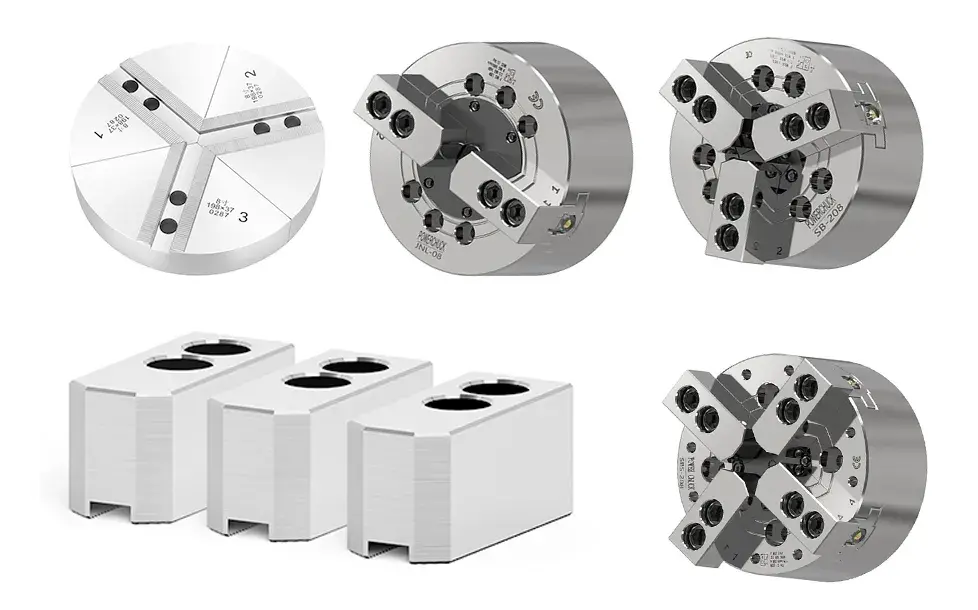Milling is one of the most common machining processes used in manufacturing, and there are many different types of milling operations that can be performed depending on the desired result. One such milling process is Face Milling, which is used to machine flat surfaces on a workpiece. In this article, we will explore the process of Face Milling in more detail and discuss its advantages and disadvantages, as well as its differences from Peripheral Milling.
How Does Face Milling Work?
Face Milling involves the use of a cutting tool called a Face Mill, which has multiple teeth that rotate on an axis perpendicular to the surface being machined. The teeth on the Face Mill are arranged in a circular pattern and engage with the workpiece to remove material in a circular motion. The depth of cut and feed rate can be adjusted to achieve the desired result.
One advantage of Face Milling is that it can be used to cut large flat surfaces quickly and efficiently. The circular motion of the cutting tool allows for a more uniform removal of material, resulting in a smoother surface finish compared to other milling processes.
Advantages and Disadvantages of Face Milling
As with any machining process, there are both advantages and disadvantages to Face Milling. Some of the advantages include:
- Efficiency: Face Milling is a very efficient process for cutting large flat surfaces. The multiple teeth on the cutting tool allow for a more uniform removal of material, which can reduce machining time.
- Surface Finish: Because Face Milling engages with the workpiece in a circular motion, it can produce a smoother surface finish compared to other milling processes.
- Versatility: Face Milling can be used to machine a wide range of materials, including metals, plastics, and composites.
However, there are also some disadvantages to Face Milling, including:
- Cost: Face Milling can be more expensive than other milling processes because it requires a specialized cutting tool.
- Limited Depth of Cut: Face Milling is not well-suited for cutting deep cavities or features because the cutting tool is not designed to remove material in a linear motion.
How Does Face Milling Differ from Peripheral Milling?
Peripheral Milling, also known as End Milling, is another type of milling process that is used to remove material from a workpiece. However, there are some key differences between Peripheral Milling and Face Milling.
In Peripheral Milling, a cutting tool with only one tooth is used to remove material from the side of a workpiece. The cutting tool moves along the edge of the workpiece in a linear motion, rather than in a circular motion like in Face Milling. This makes Peripheral Milling better suited for cutting deep cavities or features.
Another difference between Face Milling and Peripheral Milling is the surface finish that is produced. As previously mentioned, Face Milling can produce a smoother surface finish compared to Peripheral Milling.

Face Milling Operation Tips
To achieve optimal results when performing Face Milling, there are a few tips to keep in mind:
- Use the Right Cutting Tool: Selecting the right Face Mill for the job is crucial for achieving the desired results. Factors to consider when choosing a Face Mill include the material being machined, the required surface finish, and the desired feed rate.
- Optimize the Cutting Parameters: The cutting parameters for Face Milling, such as the depth of cut and feed rate, should be optimized for the specific job being performed. A deeper cut and higher feed rate can result in faster machining times, but can also lead to increased tool wear and lower surface finish quality.
- Ensure Proper Fixturing: The workpiece should be securely fixed in place to prevent movement or vibration during the machining process. Any movement or vibration can negatively impact the quality of the finished product.
- Monitor Tool Wear: Regularly inspecting the cutting tool for wear and replacing it as necessary can help maintain the quality of the finished product and prevent damage to the workpiece.
By following these tips, operators can achieve optimal results when performing Face Milling operations.
Face Milling is a milling process that is used to machine flat surfaces on a workpiece. It involves the use of a specialized cutting tool called a Face Mill, which has multiple teeth that rotate on an axis perpendicular to the surface being machined. Although there are both advantages and disadvantages to Face Milling, it is a very efficient process for cutting large flat surfaces quickly and can produce a smoother surface finish compared to other milling processes. Additionally, it differs from Peripheral Milling in the way the cutting tool engages with the workpiece and the surface finish that is produced.



